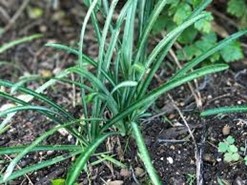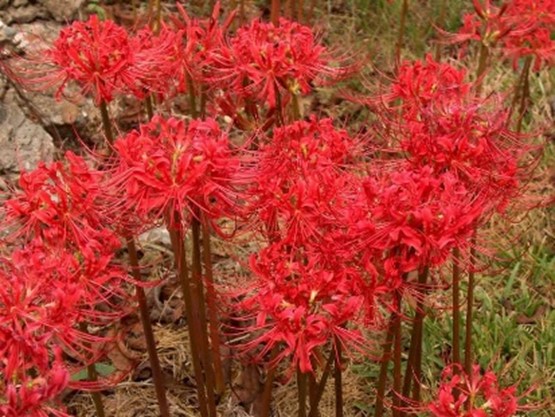Spider Lily Red
Lycoris radiata



Characteristics
- Type: Bulb
- Family: Amaryllidaceae
- Zone: 6 – 10
- Height: 1 – 2 Feet
- Spread: 1 – 1.5 Feet
- Bloom Time: August – September
- Bloom Description: Red
- Sun: Full Sun – Part Shade
- Water: Medium
- Maintenance: Medium
- Suggested Use: Naturalize
- Flower: Showy
- Attracts: Bees, Butterflies, Humingbirds
Culture
Spider Lily Red is winter hardy to USDA Zones 5b-10 where bulbs may be grown in organically rich, medium moisture, well-drained soils in full sun to part shade. Best flowering is in part shade. Plant bulbs 9” apart in fall with the top 1/4″ of the neck of each bulb exposed. Plants appreciate even moisture during their growing season, but may be best sited in areas where soils remain relatively dry during the summer dormant season. Plants will naturalize by bulb-offsets and form small colonies over time. Spider Lily Red plants are best left undisturbed in the soil. The foliage emerges in fall and remains evergreen throughout winter before dying back in late spring.
It should be noted that standard Lycoris culture requires that bulb necks be above ground level for floral bud development in the bulb, so burying the bulbs below ground level will discourage flowering. Pot culture also has problems unless the containers are unusually large and deep so that the bulbs can establish deep and extensive root systems. If containers are too small, plants may suffer from failure-to-thrive syndrome and fail to flower.
Noteworthy Characteristics
Lycoris radiata, commonly called red spider lily, is a late summer-blooming bulb of the amaryllis family. Strap-like grayish-green leaves appear in fall only after bloom is finished. Leaves overwinter and remain in the landscape before eventually disappearing in late spring. Naked flower scapes emerge from the ground in late summer to early fall, each bearing an umbel of 4-6 showy coral-red flowers. Each flower (to 2” long) has significantly reflexed tepals and exceptionally long stamens resembling spider legs, hence the common name. Scapes typically rise to 1-2’ tall. Leaves reappear in fall after the flowers bloom. Plants of this species have a short flower tube resulting in the sometimes-used common name of short tube lycoris. Plants in the genus Lycoris are sometimes commonly called resurrection flower, surprise lily, magic lily or naked ladies because the leaves disappear in summer with the flower spikes seemingly rising from the dead in late summer.
Problems
No serious insect or disease problems.
Garden Uses
A popular outdoor garden plant in USDA Zones 5b-10 where it is typically interplanted with annuals, other perennials or ground covers.
Courtesy of Missouri Botanical Garden Plant Finder